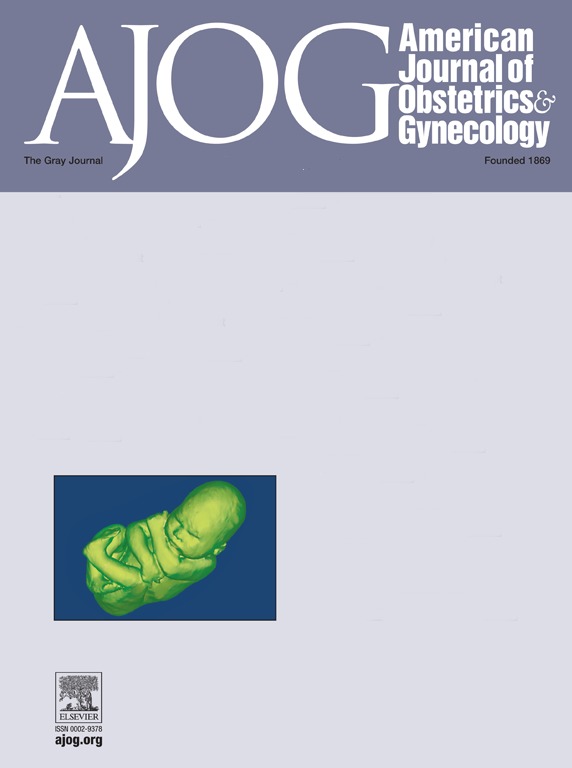The Stark (Misgav Ladach) Cesarean Delivery A Streamlined Surgical Technique: Development, Rationale and Clinical Outcomes.
IF 8.4
1区 医学
Q1 OBSTETRICS & GYNECOLOGY
引用次数: 0
Abstract
BACKGROUND Cesarean delivery (CD) rates have risen globally, yet many steps of the procedure remain unstandardized. Wide variation in abdominal and uterine incisions, peritoneal handling, and closure techniques hinders meaningful comparisons of outcomes. To improve outcomes and facilitate comparison among surgeons and hospitals, a standardized surgical approach was developed at the Misgav Ladach Hospital through an iterative, critical evaluation of each operative step. Guided by minimally invasive surgical principles, the method favors gentle separation along natural anatomical planes, reducing trauma and the need for dissection. Only essential steps were retained and optimized, resulting in what is now termed the Stark (Misgav Ladach) Cesarean technique. Over 30 years of implementation, both in low- and high-resource settings, has demonstrated superior outcomes compared with conventional methods. These include shorter skin-to-delivery time, reduction in blood loss and febrile morbidity, fewer adhesions and decreased need for analgesics. OBJECTIVE This article aims to describe the surgical steps and rationale of the Stark (Misgav Ladach) Cesarean Delivery as a guideline suggestion for the global implementation of this method and as a model for standardization for other surgical procedures.Stark (Misgav Ladach)剖宫产:一种简化的手术技术:发展、原理和临床结果。
背景剖宫产率在全球范围内有所上升,但该手术的许多步骤仍未标准化。腹部和子宫切口、腹膜处理和闭合技术的广泛差异阻碍了结果的有意义的比较。为了改善结果并促进外科医生和医院之间的比较,Misgav Ladach医院通过对每个手术步骤进行反复、严格的评估,制定了标准化的手术方法。在微创手术原则的指导下,该方法有利于沿自然解剖平面轻柔分离,减少创伤和解剖的需要。只有必要的步骤被保留和优化,导致现在被称为斯塔克(Misgav Ladach)剖宫产技术。在30多年的实施中,无论在资源匮乏还是资源匮乏的环境中,与传统方法相比,都显示出更好的效果。这包括缩短从皮肤到分娩的时间,减少失血和发热发病率,减少粘连和减少对止痛药的需求。目的本文旨在描述Stark (Misgav Ladach)剖宫产术的手术步骤和原理,作为全球实施该方法的指导建议,并作为其他外科手术的标准化模型。
本文章由计算机程序翻译,如有差异,请以英文原文为准。
求助全文
约1分钟内获得全文
求助全文
来源期刊
CiteScore
15.90
自引率
7.10%
发文量
2237
审稿时长
47 days
期刊介绍:
The American Journal of Obstetrics and Gynecology, known as "The Gray Journal," covers the entire spectrum of Obstetrics and Gynecology. It aims to publish original research (clinical and translational), reviews, opinions, video clips, podcasts, and interviews that contribute to understanding health and disease and have the potential to impact the practice of women's healthcare.
Focus Areas:
Diagnosis, Treatment, Prediction, and Prevention: The journal focuses on research related to the diagnosis, treatment, prediction, and prevention of obstetrical and gynecological disorders.
Biology of Reproduction: AJOG publishes work on the biology of reproduction, including studies on reproductive physiology and mechanisms of obstetrical and gynecological diseases.
Content Types:
Original Research: Clinical and translational research articles.
Reviews: Comprehensive reviews providing insights into various aspects of obstetrics and gynecology.
Opinions: Perspectives and opinions on important topics in the field.
Multimedia Content: Video clips, podcasts, and interviews.
Peer Review Process:
All submissions undergo a rigorous peer review process to ensure quality and relevance to the field of obstetrics and gynecology.

 求助内容:
求助内容: 应助结果提醒方式:
应助结果提醒方式:


